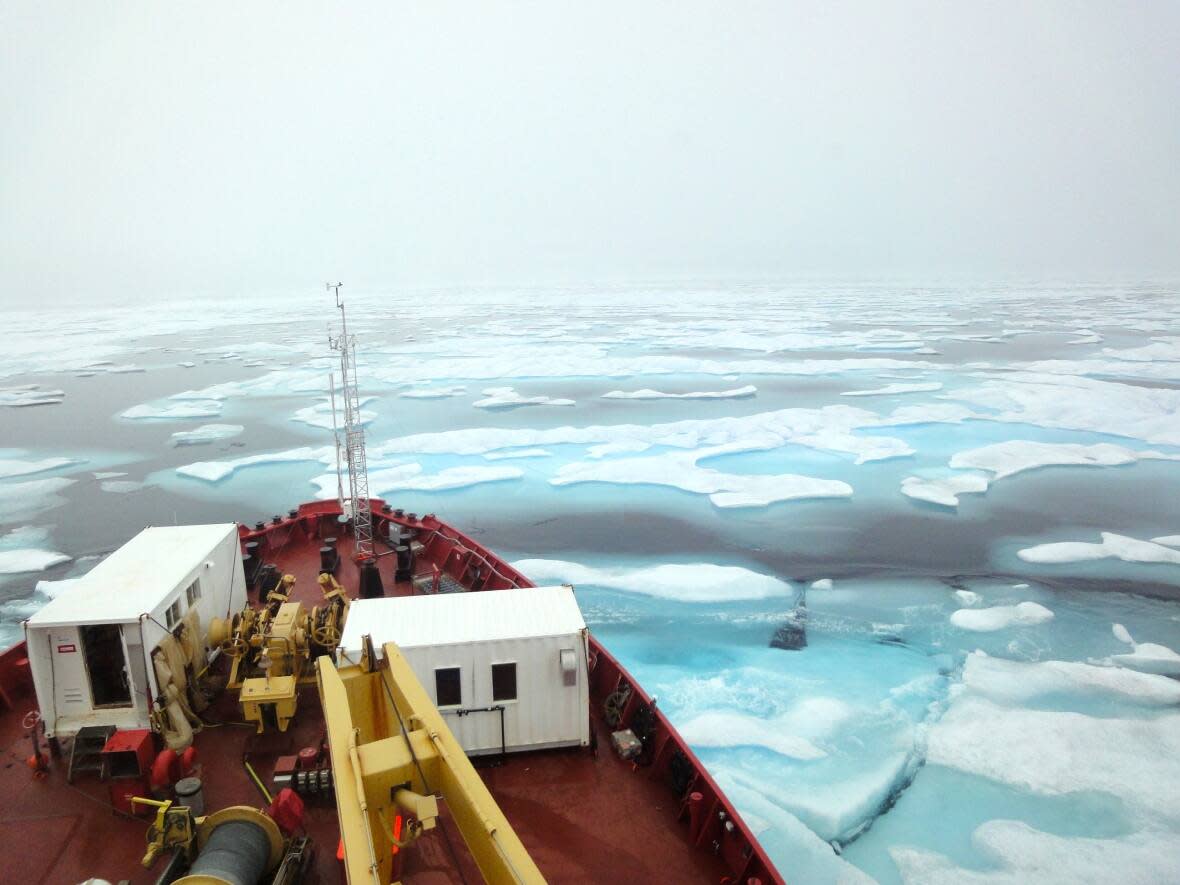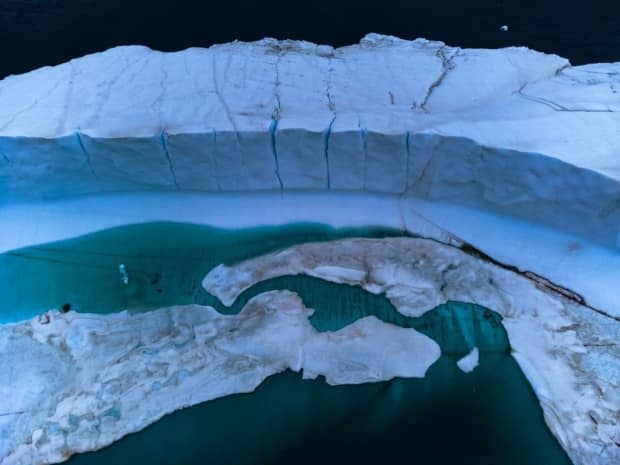Arctic's sea ice cover reached one of its lowest levels this month in part of Northwest Passage

The Arctic's sea ice cover is continuing on a downward spiral after it reached one of its lowest levels on record this month in a section of the Northwest Passage.
Sea ice coverage along the northern route of the Northwest Passage was the fourth lowest on record since 1968 during the week of Sept. 10, the Canadian Ice Service (CIS) said Wednesday.
At 10 per cent coverage, this was "dramatically below" the historical average coverage of 43 per cent, said a Tweet from the agency.
A lot of the Northwest Passage appears to have melted out this year, said Walt Meier, a sea ice researcher at the National Snow and Ice Data Center in Boulder, Colo., which also tracks Arctic sea ice by satellite microwave sensors.
"It was pretty close to ice-free in the major channels, especially in the Parry Channel," Meier said. "This is somewhat unusual."
The Parry Channel runs east to west, connecting Baffin Bay in the east with the Beaufort Sea in the west.
It lies to the north of the more circuitous southern route of the passage, which Roald Amundsen took in 1905-06.
That is the route that has more recently typically been open, Meier said.
But this year the northern route was more or less open, despite ice that flows from the north down.
"It wasn't clogged with ice as it used to be," Meier said.
Based on what Meier saw in CIS charts, the northern route would not have been very hard to navigate — although there still would have been ice, he cautioned.
While there's some disagreement on how to rank this year's diminished cover — whether it was the fourth or 10th lowest in the past 44 years, all are in agreement on the long-term downward trend, Meier said.

The summer ice cover in and around the Arctic Ocean has declined since satellites began measuring this in 1978, said NASA in comments on the ice minimum of 2022.
"The past 16 years [2007 to 2022] have been the lowest 16 minimum extents, with 2022 tying 2017 and 2018 for 10th-lowest in 44 years of observations," NASA said in a post to its climate website Thursday.
NASA and the data centre say Arctic sea ice reached its annual minimum extent of 4.67 million square kilometres on Sept. 18, tying for 10th lowest with 2018 and 2017.
"It's a little bit lower than last year. It's about 100,000 or so square kilometres below last year," Meier said.
That's an area that is about equivalent to the size of Iceland.
While no data has been released yet on the Arctic Ocean's ice thickness, Meier said older ice — ice which has survived three summers — has almost disappeared.
Now, in response to the setting sun and falling temperatures, the ice has begun expanding. This growth will continue through the autumn and winter until it reaches its maximum next March.

